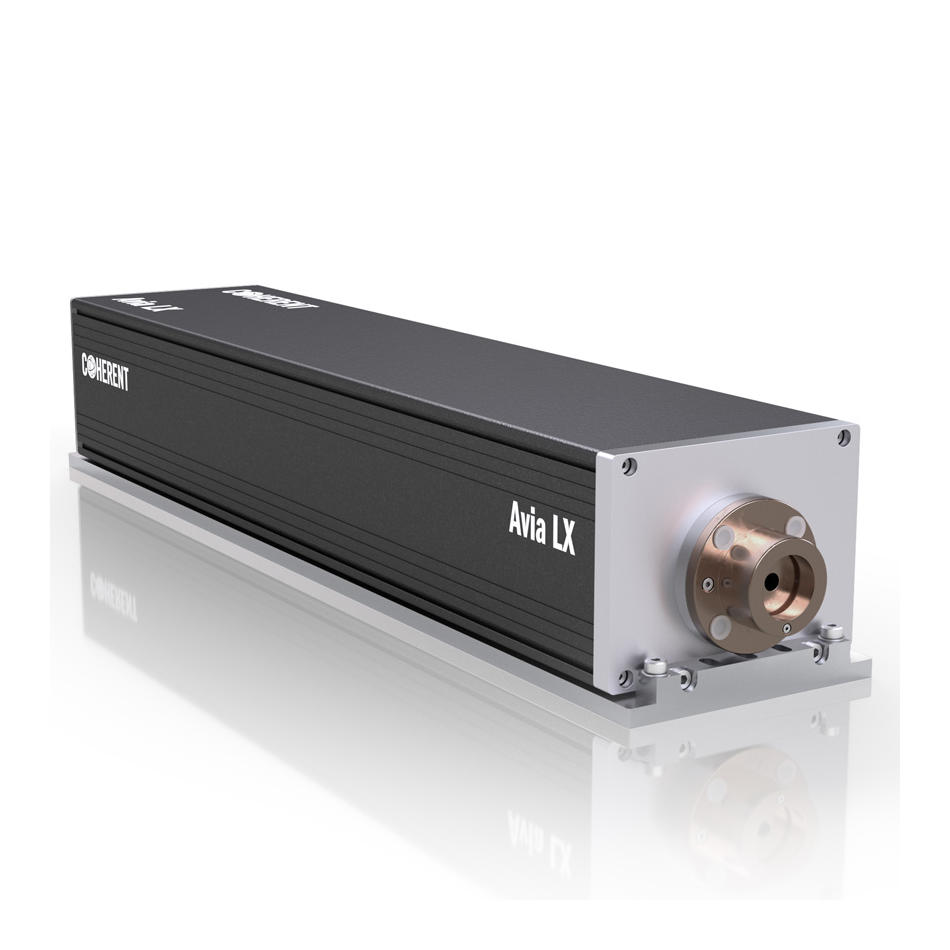Introducing Our New High-Power UV Laser: The Coherent AVIA LX 355-30
Today, we’re debuting a new high-power UV laser that reduces cost per part for PCB depaneling and drilling, SiP cutting, and more.
October 11, 2021 by Coherent

The newest Coherent AVIA LX 355-30 nanosecond ultraviolet (UV) laser offers an unmatched combination of high output power, reliability, and long lifetime, providing a big boost in productivity for high-precision cutting, drilling, and microstructuring tasks, particularly in microelectronics production. Specifically, the AVIA LX outputs 30 W at 355 nm (pulse energy up to 500 μJ) and delivers an unparalleled 20,000 hours of continuous frequency-tripling crystal lifetime–without any spot shifting. This translates into higher process consistency and less maintenance downtime.
Why microelectronics processing applications benefit from UV lasers
UV lasers power a wide range of industrial tasks, particularly in microelectronics and display fabrication. That’s because UV light has unique properties that enables micromachining and other structuring tasks with higher precision and less heat damage to the part.
There are three big reasons why UV lasers can do this. First, just about everything –plastics, organic materials, metals, and semiconductors –strongly absorbs UV light. So, the laser energy effectively processes the material, rather than just passing right through it. This also makes UV lasers particularly adept at working the composites and multilayer materials used increasingly in microelectronics and other industries.
Second, high absorption also means that the UV laser light doesn’t penetrate far into a material, effectively minimizing the size of the so-called “heat-affected zone.” The HAZ is the area surrounding the laser-produced feature (cut, hole, etc.) which might be damaged or have its properties altered by the laser light.
Third, UV light can be focused down better than longer wavelength visible or infrared (IR) light. This means a UV laser can make smaller holes or narrower cuts.
Nanosecond Lasers hit the "Sweet Spot”
Nanosecond pulse-width, diode-pumped, solid-state lasers are the most popular industrial UV source, because they represent the “sweet spot” for most manufacturers. They’re economically attractive (in terms of $ per watt), typically operate at relatively high pulse repetition rates, and are also available with fairly high output powers. This delivers cost-effective, high-throughput production.
But manufacturers are always seeking to further improve their processes and reduce costs. In terms of the laser source, this often means higher output power, because this usually enables increased process throughput.
There’s just one little problem with doing that with solid-state UV lasers. (Actually, there’s a bunch, but we’re just going to talk about one of them here!) This is because solid-state lasers emit infrared (IR) light. So, a third harmonic generation (THG) crystal is used inside the laser to convert the IR light to UV.
But, remember how UV light is absorbed so well in most materials? That means that it’s really hard to avoid at least some absorption of the laser energy in the THG crystal. And, because it’s inside the laser, the THG crystal is exposed to a lot of UV light.
One solution to this problem is to build a mechanism right into the laser that periodically physically moves the THG crystal. The idea is to keep changing where the laser beam is focused in the crystal before it catastrophically fails at any particular location.
This approach works well, and Coherent has used it for years on our products. Obviously, though, it increases the cost and complexity of the laser. Plus, every time the crystal is shifted to a new position, there are subtle changes to the output power and other beam parameters that can affect the process and therefore part quality.
Another approach is simply to ignore the problem altogether, and keep the THG crystal in a single spot until the laser dies. This makes the laser head much less expensive, and is a great idea as long as you don’t mind low laser reliability, poor output consistency, or short lifetime (<3000 hours).
Reliable UV power for microelectronics manufacturing
Now Coherent has a better way we call PureUV. It’s actually a combination of several proprietary crystals growing, preparation, and assembly steps. The net result is a THG crystal of such high quality and low UV absorption that it has a maintenance-free lifetime of 20,000 hours at a single spot. So, there’s no spot shifting, no periodic downtime, and no change in laser parameters. Just trouble-free performance.
Coherent can implement PureUV because we’re a vertically integrated supplier–from crystal growth up through final laser assembly. This gives us complete control over every phase of production and enables us to implement extremely tight quality and process control.
The new 30 W AVIA LX 355 is our first product to incorporate PureUV. And, it’s what has allowed us to reach such a high UV power level while still offering an unbeatable combination of lifetime and reliability.
Discover more about AVIA LX 355.
Related Resources
